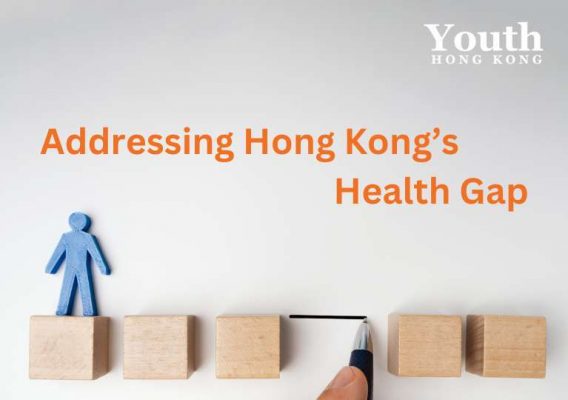//vol.15-1 Interview
Lakshmi Jacota
By most health indices, Hong Kong ranks among the best in the world, in terms of registered live births, life expectancy and with the leading cause of death for both men and women related to malignant neoplasmsi. So what do we mean when we say that Hong Kong has a health gap? Dr Roger Chung from the Chinese University of Hong Kong explains.
- Hong Kong’s high life expectancy could sometimes
- It is not enough to look at health policies in a dichotomous way without considering socioeconomic factors such as behavioural and lifestyle factors, material circumstances, and the state of psychosocial health.
- We should also see beyond healthcare policies because most people do not show up in a healthcare system unless they are ill.circumstances, and the state of psychosocial health.
- A change of paradigm towards these issues needs education and the willingness from the authorities to listen.
- 香港的高預期壽命有時或會忽視引致健康不平等的社會差異。
- 假如僅以二元對立的方式去審視衛生政策,而未有考慮社會經濟因素,例如生活方式和行為因素、物質環境和市民的心理健康狀況,這明顯是過猶不及。
- 我們的視野亦應放遠於醫療政策的背後,因為大部分市民人除非生病,否則不會出現於醫療體系當中。
- 要改變這些問題的模式,需要由教育方面入手,以及有關當局願意聆聽的意願。
The Health Gap
Historically, according to Dr Chung, Hong Kong has had a resilient population as immigrants from the Mainland and survivors of war and upheaval, many with the will and determination to survive and thrive. Given the more current and positive statistics of overall health, it could be easy, therefore, to overlook social disparities that have resulted in health inequalities.
These health inequalities, Dr Chung argues, are not necessarily the result of Hong Kong not providing available or accessible health care. Conversely, Hong Kong has a relatively well organised health care infrastructure, both public and private that – in the main – is both affordable and accessible for the vast majority of the population.
Where the disparities lie can be found if one looks at public health through the lens of a social gradient. According to The Health Gap, a Chinese version published in 2021 by the Chinese University of Hong Kong, Dr Chung referenced leading scholar Professor Sir Michael Marmot in explaining that “health inequalities should also address the inequalities in educational attainment, employment, income, and quality of the neighbourhood, among other determinants.” It was not enough to look at health care policies in a dichotomous way without taking into consideration socioeconomic determinants such as behavioural and lifestyle factors, materialistic circumstances and even the state of psycho-social health.
A change of paradigm … needs education and the willingness from the authorities to listen
In fact, to help level the inequality in health care, Dr Chung continued, “Greater universal action is needed to reduce the steepness of the social gradient of health inequalities, which is proportionate to the level of disadvantage3. He did acknowledge that while there are intermediary determinants like lifestyle behaviours that everybody relates to in general, studies “would also reveal upstream factors related to culture and societal values. For example, what are the more upstream social factors that make people drink and smoke more while exercising less?” Similarly, “It would be unfair and inequitable to say, for instance, only those who are more well off should have greater access to healthcare. Many have this misunderstanding that the social determinants of health are just limited to healthcare policies, which they shouldn’t be.”
Instead, determining the state of health only by looking at healthcare policies, according to Dr Chung, “should be the last thing for consideration! We should see beyond healthcare policies because most people do not show up in a healthcare system unless they have fallen ill.” And even then, there is the question of those who are not currently able to show up for health care support, because perhaps they are daily wage earners or someone on shift work, or single parents who need to take care of their children at all times, or patients who are even deterred by geographical and logistical hurdles to seek proper treatment.
So what might be the solution to address and close this health gap?
Time for a Collaborative Approach
A strategic and holistic approach is needed according to Dr Chung, who recommends at the very least that health care policies require an interdepartmental approach among the various governmental bureaux, including labour, education, social welfare, housing and even equal opportunities. “A change of paradigm towards these issues needs education and the willingness from the authorities to listen.”
Cannot look at health care policies in a dichotomous way without also considering socioeconomic determinants
Beyond this, which he agrees is not an easy task, Dr Chung also argues for a more distinctive understanding of both ‘primary healthcare’ and ‘primary care’, which are two very different separate entities on their own. ‘Primary healthcare,’ which strives for universal health care accessible to all, is arguably not achieved in Hong Kong, since some people are inadvertently denied adequate health care due to lack of financial means as the outpatient clinics are mostly privatised and our public General Out-Patient Clinics (GOPC) are also scattered geographically.
For Hong Kong to do more than resemble the resilience of the early generation of migrants, it becomes necessary to establish a health care system based on equity, something that is contingent upon all stakeholders in the community to come together and build a fairer and sustainable society. This would, Dr Chung argued, require a reimagining and reanalysis of looking at health care simply from a resources allocation perspective, to something more akin to a capabilities approach, where consideration is paid to enabling people to have equal capability to translate these resources into actual health benefits.
Based on Sir Michael Marmot’s research, here are five recommendations drawn up by the CUHK Institute of Health Equity to reduce health inequalities in Hong Kong 3:
RECOMMENDATION 1
To raise public awareness of the importance of health inequalities, social gradients of health and social determinants of health.
RECOMMENDATION 2
The government should set up new databases that provide necessary linkages between socioeconomic indicators and health outcomes and improve existing collection of data to identify and monitor health inequalities in Hong Kong regularly. Where possible, the data should be disaggregated by age, gender, socioeconomic position, and geographical areas and include new indicators on vulnerable groups and the extent of healthy ageing in the society.
RECOMMENDATION 3
The government should work with other sectors, including academia, social care and healthcare, professional bodies, businesses, charities and voluntary organisations, in developing policies across the board to mitigate the social determinants of health inequalities and alleviate the burden of disease on disadvantaged groups.
RECOMMENDATION 4
To review the impact of COVID-19 and the containment measures on physical and mental health of different social groups, including school children, working adults and foreign domestic workers. To incorporate analysis of the impact of policies on health equity of society in future policies and measures to tackle the pandemic.
RECOMMENDATION 5
In the long run, it is necessary to establish a unified vision on fair and equitable society in Hong Kong through engaging and building up consensus with stakeholders in different sectors including the government and the civil society. This initiative should be placed in the larger context of the UN sustainable development goals and the WHO’s decade of healthy ageing.

Dr Roger Chung, PhD, MHS, is currently an Associate Professor of the School of Public Health and Primary Care (SPHPC) of the Chinese University of Hong Kong (CUHK). He is also the Co-Director of the CUHK Centre for Bioethics and the Associate Director of the CUHK Institute of Health Equity.
References:
1. In 2021, the crude birth rate was 5.2 registered live births per 1,000 population, while life expectancy at birth for male and female were 83.2 and 87.9 years old respectively. For these and more statistics, see: https://www.healthyhk.gov.hk/phisweb/en/chart_detail/12/
2. https://www.thelancet.com/journals/lanwpc/article/PIIS2666-6065(22)00251-6/fulltext
3. https://www.ihe.cuhk.edu.hk/wp-content/uploads/Health-Equity-Report-01.pdf


